|
Mexico
Royal Photograph
Gallery
Published in New York
in 1893
Quotes Are From the
Book
[Back to
Royal Photograph Gallery] [Egypt]
|
|
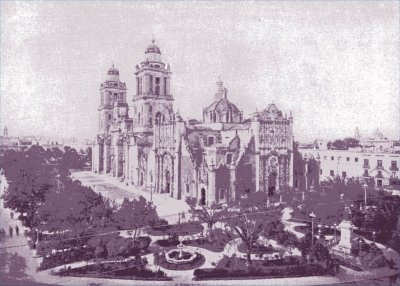
|
|
Cathedral, Mexico (at
Plaza Templo Mayor)
A recent photo is here
"Where stood an
Aztec temple now rises this majestic pile, which was ninety-four years in
course of erection and cost $1,750,000. It was founded in the reign
of Charles V., in 1530, but building operations were not begun until
1573. Its campaniles are 200 feet high, with the dome; and the
length of the edifice is 432 feet, its breadth about 200 feet. The
old Mexican calendar stone, built into one of the walls, was dug up in
1790. It had been buried as a profane thing by Cortez, but
archaeologists find great satisfaction in its resuscitation. On its
surface are curious carvings occupying its entire surface, which is a
circle of twelve feet diameter. The interior of the cathedral is
fine and imposing".
|
|
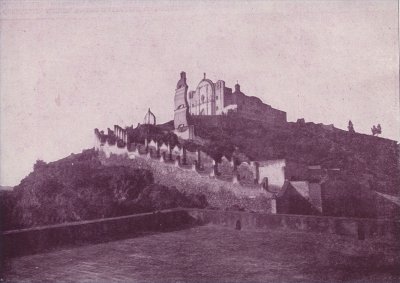
|
|
Church of Guadalupe
"Half an hour's
ride from the Plaza mayor, Mexico, stand the cathedral and chapel which
are the principal objects of interest in Guadalupe. From the chapel
a fine view of the valley of Mexico is enjoyed. The cathedral is a
brick building, with a dome and four towers. A solid silver railing,
a yard high, leading from the choir to the high alter and extending round
the edge of the latter, is that feature of the interior which excites the
greatest interest in the mind of the average tourist. Oil paintings
of no particular merit, wax work, and the carvings in the choir impress
the devout only less than the picture of the Virgin Mary which hangs in
the high altar. The story of how the Blessed Lady appeared to Juan
Diego, a poor working Indian, is told in verses sold at the door of the
cathedral, in which are celebrated special festivals in her honor".
|
|
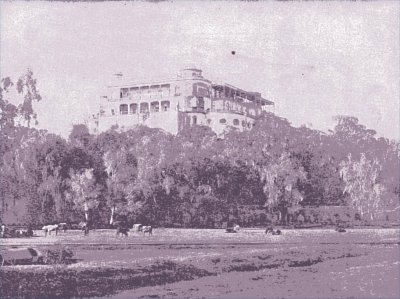
|
|
Chapultepec Castle,
Mexico City
"Montezuma had a
residence on the same site as the castle now standing, and his eyes rested
on at least some of the noble trees which are the admiration of travelers
to-day. One of these, known as the cypress of Montezuma, measures
forty-six feet in circumference. The memory of another ill-fated
ruler, that of Maximilian, is associated with Chapultepec. This was
the scene of his short-lived dignity as the head of a court, and here he
gave his last great entertainment, aptly known as the Feast of Belshazzar,
on his fatal return from Orizaba to Queretaro. The lower tier of
buildings, seen beneath the trees, is now the National Military Academy,
the West Point of Mexico, and the upper structure is, so to speak, the
Mexican White House, where the President lives. Fine views are
commanded from the castle, not only of the city of Mexico, but of the
whole valley in which it is built, and two noble mountains dominate the
landscape. The palace is of marble; some of its decorations are in
fine taste, but, taken as a whole, the large sums of money spent by
Maximilian in its embellishment do not constitute an example of judicious
outlay".
|
|
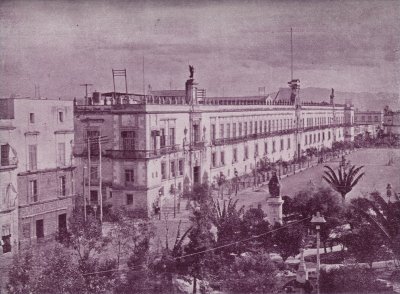
|
|
National Palace,
Mexico City
"The Mexican Senate
has its sessions in this building, which is, besides, the official home of
the administration, where the President, his ministers and military
commanders, have their rooms for the dispatch of public business.
Ambassadors' Hall is 310 feet long by 30 feet wide. The chief
meteorological observatory of Mexico is on this building, seven thousand
feet nearer the heavens than structures devoted to the same use in
Washington and Greenwich. Axayacatl, father of the unhappy
Montezuma, had a palace where that of the illustration now stands, in
which, says tradition, was one room large enough for the accommodation of
three thousand persons. The National Palace is seven hundred feet
long, built of marble, in appearance not unimposing and certainly not
beautiful. It is easy of access by the stranger, who is shown, among
other objects that may be more interesting, the state coach used by the
Emperor Maximilian".
|
|
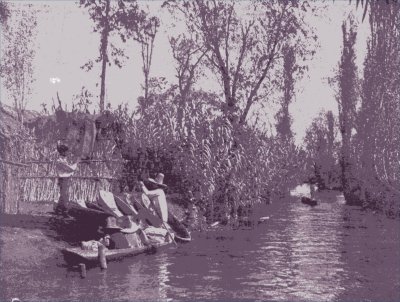
|
|
Chinampas or Floating
Gardens of Mexico
"The plateau of
central Mexico is between 7000 feet and 8000 feet above sea level.
It is dotted here and there with lakes, some of fresh water and some of
salt water. That of Texcoco is salt; lakes Chalco and Xochimilco are
fresh. The last named are covered with a mass of floating
vegetation, necessitating the cutting of canals to maintain communication
with the shores of the lakes and the islands which they encompass.
In some instances, the floating masses are dense enough to admit of
gardens being made upon their surface, upon which are produced corn,
vegetables and flowers. These gardens are made of turf, laid in
strips from sixty feet to ninety feet long and about six feet wide, to a
thickness which raises the island thus created from two to three feet
above the water. Soil is placed on it, and garden operations
follow".
|
|
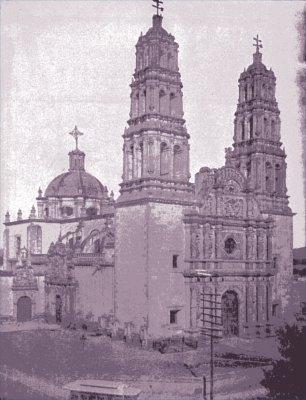
|
|
Cathedral at
Chihuahua, Mexico
"The city of
Chihuahua is situated at an elevation of 4690 feet, and has a salubrious
climate. Its environs are productive of fruit, vegetables and the
cereals, and the State of the same name, of which it is the capital, is a
fine grazing country. Chihuahua was founded about two centuries ago
by adventurers intent upon developing the silver mines in the
neighborhood. Its chief ornament is the parish church, generally
called the cathedral, which has an imposing exterior and cost $800,000 to
build. Fifteen miles from Chihuahua are the silver mines of Santa
Eulalia, the product of which was taxed in order to raise money for the
erection of the cathedral".
|
|
|
|
|
